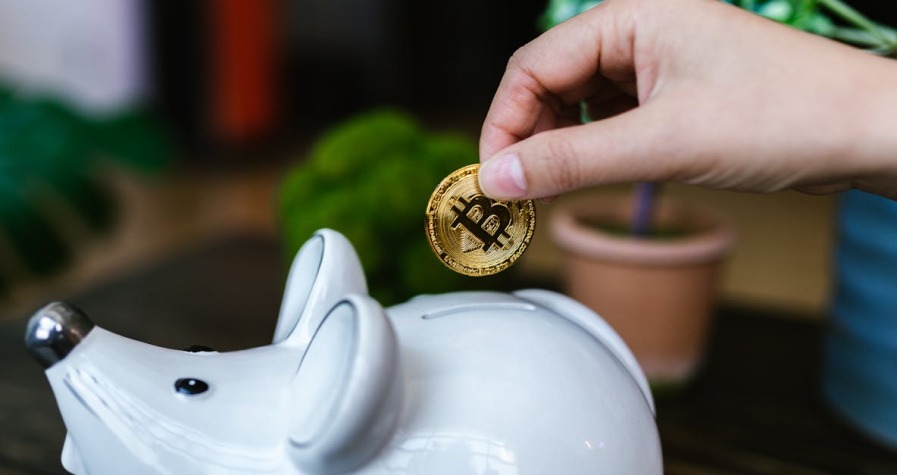Since its 2017 launch, BNB has evolved from a simple exchange token into one of the most versatile digital assets in crypto. Originally conceived as Binance Coin to streamline trading on the Binance exchange, BNB now powers transactions across Binance Chain and BNB Smart Chain, supports hundreds of decentralized applications, and unlocks a growing suite of ecosystem perks. For traders who understand how to leverage it, BNB delivers tangible cost savings on every trade, access to exclusive token launches, staking rewards, and participation in a thriving DeFi landscape,all while reducing gas fees to pennies.
Yet even though these benefits, many users hold BNB without fully grasping how discount tiers work, when to increase their balance, or which ecosystem features deliver the most value. Whether you’re a casual trader looking to trim fees or a DeFi power user hunting yield opportunities, understanding BNB’s mechanics can translate directly into dollars saved and opportunities gained. This guide breaks down exactly how BNB fee discounts operate, what ecosystem benefits matter most, and how to strategically position your holdings to maximize returns while managing the risks that come with centralized infrastructure.
Key Takeaways
- Using BNB for exchange discounts can reduce Binance trading fees by up to 25%, with savings scaling significantly for high-volume traders through VIP tier benefits.
- BNB unlocks ecosystem benefits beyond fee discounts, including access to exclusive token launches via Binance Launchpad, staking rewards, and participation in DeFi protocols on BNB Smart Chain.
- Gas fees on BNB Smart Chain cost pennies compared to Ethereum, making BNB essential for affordable DeFi, NFT, and gaming transactions.
- Strategic BNB holdings should be calibrated to your 30-day trading volume and tier thresholds to maximize fee savings while managing price volatility and opportunity costs.
- Centralization and regulatory risks are important considerations, as BNB’s value and utility depend heavily on Binance’s operational stability and evolving global compliance landscape.
- Active traders, DeFi users, and token launch participants benefit most from using BNB, while infrequent traders may find its utility marginal without consistent ecosystem engagement.
What Is BNB and Why Does It Matter?
BNB is the native utility token of the Binance ecosystem, a network that extends far beyond the Binance exchange itself. Launched in 2017 during Binance’s initial coin offering, BNB was initially built on Ethereum as an ERC-20 token before migrating to Binance’s own blockchain infrastructure. Today, it operates on both Binance Chain,optimized for fast trading,and BNB Smart Chain (BSC), which supports smart contracts and decentralized applications.
What makes BNB essential isn’t just its heritage as an exchange token. It’s the breadth of utility it unlocks. Users who hold and deploy BNB gain immediate access to reduced trading fees on one of the world’s largest cryptocurrency exchanges, slashing the cost of frequent trading. Beyond fee discounts, BNB serves as the fuel for transactions across BSC, where it covers gas fees for DeFi protocols, NFT marketplaces, gaming platforms, and yield farms.
BNB also acts as a gateway to exclusive opportunities. Holders can participate in Binance Launchpad token presales before projects hit public markets, stake their tokens to earn passive income, and access VIP tiers that offer enhanced trading conditions. The token’s quarterly burn mechanism,where Binance permanently removes BNB from circulation,adds a deflationary element designed to support long-term value.
For anyone actively trading on Binance or engaging with BSC’s DeFi ecosystem, BNB isn’t optional,it’s foundational. The question isn’t whether to hold BNB, but how much to hold and how to deploy it for maximum advantage.
How BNB Trading Fee Discounts Work
The most immediate benefit of holding BNB is the discount it provides on Binance trading fees. When users elect to pay their trading fees in BNB rather than the traded asset or fiat, they receive an automatic reduction compared to the standard fee rate. This discount applies to spot trading, margin trading, and futures contracts, making it valuable across virtually every trading activity on the platform.
To activate the discount, users simply enable the “Use BNB to pay for fees” option in their Binance account settings. Once toggled on, the exchange automatically deducts fees from the user’s BNB balance at the discounted rate. There’s no complex process,just an immediate reduction in trading costs that compounds with every order placed.
Understanding the Discount Tier Structure
Binance’s fee structure operates on a tiered system that rewards both trading volume and BNB holdings. The discount isn’t flat,it scales based on a user’s 30-day trading volume and the amount of BNB they hold in their account. This creates a dual incentive: trade more and hold more BNB to unlock progressively better rates.
At the base level, regular users start with standard fees around 0.1% for maker and taker orders. By paying with BNB, they immediately receive a discount. But, as users climb the VIP tiers,which Binance calculates monthly based on cumulative trading volume and BNB balance,fee rates drop further. Higher tiers unlock not just lower fees but also benefits like higher withdrawal limits, dedicated account management, and priority customer support.
The tier system is dynamic. If a user’s 30-day volume drops or their BNB balance decreases, they may move to a lower tier the following month. Conversely, accumulating BNB and maintaining trading activity keeps users at higher tiers with sustained cost advantages. This structure favors active traders who commit capital to BNB holdings, effectively rewarding loyalty and volume.
Calculating Your Potential Savings
Understanding the math behind fee discounts helps quantify the value of holding BNB. Suppose a trader operates at the standard 0.1% fee rate and executes $100,000 in monthly volume. Without BNB, they’d pay $100 in trading fees. If paying with BNB drops their effective rate to 0.075%, fees fall to $75,a 25% savings, or $25 per month.
For higher-volume traders, the numbers scale rapidly. A user trading $1 million monthly at standard rates pays $1,000 in fees. With BNB fee discounts and VIP tier benefits reducing rates to 0.06%, fees drop to $600, saving $400 monthly or $4,800 annually. These aren’t trivial sums,they represent real capital that can be reinvested, compounded, or withdrawn.
It’s also worth considering the opportunity cost. If holding BNB for fee discounts saves $400 monthly, and the BNB required to maintain that tier is worth, say, $5,000, the annualized return from fee savings alone is nearly 10%,before accounting for any price appreciation or staking yields. For professional traders and liquidity providers, maintaining an optimal BNB balance becomes a strategic allocation decision, not just a convenience.
Beyond Trading Fees: Ecosystem Benefits of Holding BNB
While fee discounts are the headline feature, BNB’s utility extends well beyond cost savings on trades. The token unlocks access to a sprawling ecosystem of financial products, DeFi protocols, and exclusive events that collectively offer more value than fee reductions alone.
Participating in Token Launches and Launchpad Events
Binance Launchpad and Launchpool give BNB holders early access to new token projects before they hit the open market. These platforms allow users to commit BNB (and sometimes other tokens) to participate in token sales or farming events, earning allocations of newly launched assets. Historically, many Launchpad projects have delivered significant returns to early participants, with tokens appreciating multiples of their launch price within days or weeks.
Access to these events is typically gated by BNB holdings and, in some cases, snapshot-based eligibility. Users who maintain BNB balances are automatically positioned to participate when new launches are announced. For those hunting alpha or looking to diversify into emerging projects, BNB serves as the entry ticket.
Launchpool events, meanwhile, let users stake BNB to farm new tokens without upfront capital outlay beyond the BNB they already hold. It’s essentially passive income generation tied to ecosystem growth,users earn new tokens while retaining their BNB principal, which can be unstaked at any time.
Staking and Earning Passive Income
BNB isn’t just a trading asset,it’s a yield-generating one. Through Binance’s native staking products, DeFi protocols on BSC, and delegated staking on Binance Chain, holders can earn passive returns on their BNB without selling or trading.
Binance offers flexible and locked staking products where users deposit BNB for a set period and earn interest. Locked staking typically offers higher annual percentage yields (APYs) in exchange for time commitment, while flexible staking allows instant withdrawals at lower rates. These products are accessible directly through the Binance platform, requiring no third-party interaction or complex DeFi navigation.
On-chain, users can delegate BNB to validators on Binance Chain or participate in liquidity pools and yield farms on BSC-based DeFi platforms like PancakeSwap, Venus, or Alpaca Finance. These strategies often yield higher returns but come with smart contract risk, impermanent loss, and the need for active management. For users comfortable with DeFi mechanics, staking BNB on-chain opens up a broader range of yield opportunities.
Access to DeFi Platforms and Lower Gas Fees
BNB Smart Chain has become one of the most active blockchain networks for DeFi, NFTs, and decentralized applications, largely due to its low transaction costs and Ethereum Virtual Machine (EVM) compatibility. BNB is the native gas token for BSC, meaning every transaction,whether swapping tokens, minting NFTs, or interacting with smart contracts,requires a small amount of BNB to cover fees.
Compared to Ethereum’s often prohibitive gas costs, BSC transactions cost pennies. A token swap that might cost $20–$50 in gas on Ethereum typically runs under $0.50 on BSC. This affordability has attracted millions of users and hundreds of protocols, creating a vibrant DeFi ecosystem where BNB holders can trade, lend, borrow, farm, and speculate without being priced out by fees.
Holding BNB also enables participation in BSC’s NFT marketplaces and blockchain gaming platforms. Whether minting generative art, buying in-game assets, or trading collectibles, BNB is the currency that powers these interactions. For users exploring Web3 beyond trading, BNB provides the infrastructure layer that makes participation economically viable.
Maximizing Your BNB Benefits: Practical Strategies
Understanding BNB’s features is one thing,deploying them strategically is another. Maximizing the value of BNB holdings requires deliberate planning around balance size, timing, and usage patterns.
Optimal BNB Balance for Fee Discounts
The key to unlocking maximum fee discounts is maintaining the right BNB balance relative to your trading volume. Binance’s VIP tier structure publishes clear thresholds for both 30-day volume and BNB holdings. Users should calculate their average monthly volume and cross-reference it with the tier requirements to determine the minimum BNB balance needed to reach the next tier.
For example, if a trader consistently executes $500,000 in monthly volume and holds 50 BNB, they might sit at VIP 1. But if the next tier (VIP 2) requires 100 BNB and delivers another 0.01% fee reduction, the incremental savings could justify acquiring the additional BNB. The calculation involves comparing the cost of holding more BNB (opportunity cost, price risk) against the annualized fee savings and other perks.
It’s also wise to maintain a buffer above the minimum tier threshold. Since tier calculations are based on rolling 30-day averages, a sudden dip in trading volume or BNB price volatility could drop a user to a lower tier. Holding slightly more than required provides cushion and ensures consistent benefits.
Timing Your BNB Purchases and Holdings
BNB’s price fluctuates with broader crypto market conditions, Binance-specific news, and token burn events. Strategic buyers can time their BNB purchases to coincide with market dips or periods of lower volatility, reducing the cost basis of holdings used for fee discounts and staking.
Monitoring Binance’s quarterly burn schedule can also inform timing decisions. Burns reduce circulating supply, often generating short-term price support or bullish sentiment. Accumulating BNB ahead of anticipated burns,or major Launchpad events,can capture both utility value and price appreciation.
For users who trade sporadically, it may make sense to increase BNB holdings during periods of planned high activity and reduce exposure during quiet months. This dynamic allocation treats BNB not as a static hold but as a tactical position adjusted to match usage intensity and market conditions.
Finally, consider staking BNB during periods of inactivity. If trading volume drops and tier benefits become less relevant, shifting BNB into staking products generates passive income without sacrificing liquidity entirely. Many flexible staking options allow near-instant withdrawal, preserving access if trading activity resumes unexpectedly.
Risks and Considerations When Using BNB
For all its benefits, holding and using BNB comes with risks that users must understand and manage.
Centralization is the most frequently cited concern. Unlike decentralized networks governed by distributed validator sets, BNB’s ecosystem is closely tied to Binance, a centralized exchange. The token’s utility, value, and future development depend heavily on Binance’s performance, reputation, and strategic decisions. If Binance faces operational issues, security breaches, or leadership challenges, BNB could suffer disproportionately.
This centralization extends to governance and control. Binance exercises significant influence over BNB Smart Chain’s validator set and protocol upgrades. While this enables rapid development and responsiveness, it also concentrates power in ways that conflict with crypto’s decentralization ethos. Users who prioritize censorship resistance and permissionless finance may view BNB’s architecture as a compromise.
Regulatory risk looms large. Binance operates in a complex, evolving global regulatory environment. The exchange has faced scrutiny, fines, and restrictions in multiple jurisdictions, and future enforcement actions could limit user access, freeze assets, or restrict BNB’s utility. Regulatory uncertainty is particularly acute for U.S. users, where Binance.US operates under different constraints than the global platform.
Changes in regulation could also impact BNB’s classification. If regulators deem BNB a security rather than a utility token, it could face delisting, trading restrictions, or compliance burdens that diminish its value and usability.
Market and volatility risk is inherent to any crypto asset. BNB’s price can swing sharply based on market sentiment, Bitcoin’s performance, or Binance-specific news. Holders using BNB for fee discounts or ecosystem access may find themselves exposed to price declines that offset savings. A 20% drop in BNB’s price could erase months of accumulated fee discounts, turning what seemed like a cost-saving strategy into a net loss.
Users should also consider liquidity risk. While BNB is highly liquid on Binance and many other exchanges, sudden market shocks or exchange outages could impair the ability to sell or transfer holdings quickly.
Finally, smart contract risk affects users who stake BNB on-chain or participate in DeFi protocols on BSC. Bugs, exploits, or protocol failures can result in permanent loss of funds. Even audited contracts carry risk, and the rapid pace of BSC development means newer protocols may have less battle-testing than Ethereum-based counterparts.
Real-World Use Cases: Who Benefits Most from BNB?
BNB’s utility isn’t universal,it delivers the most value to specific user profiles whose activities align with its strengths.
Retail traders who execute frequent spot trades on Binance see immediate, measurable benefits from fee discounts. For someone making dozens or hundreds of trades per month, even a 0.025% reduction per trade compounds into significant annual savings. These users don’t need large BNB holdings to benefit: even modest balances activate fee discounts and reduce friction.
Professional traders and liquidity providers operating at high volumes gain disproportionately. VIP tier benefits,lower fees, higher limits, priority support,become crucial competitive advantages. For market makers and algorithmic traders, where margins are thin and volume is massive, BNB-driven fee reductions directly impact profitability. Many institutional participants maintain substantial BNB balances precisely to sustain top-tier status and optimize cost structures.
DeFi users and yield farmers on BNB Smart Chain rely on BNB for gas fees and staking opportunities. These users interact with multiple protocols daily,swapping, lending, providing liquidity, harvesting rewards,and BSC’s low costs make this activity economically viable. Holding BNB isn’t just convenient: it’s essential infrastructure. Also, yield farmers can deploy BNB across liquidity pools and staking vaults, generating passive income while maintaining gas reserves.
NFT collectors and GameFi participants benefit from BNB’s role in BSC’s growing NFT and gaming ecosystems. Minting NFTs, purchasing in-game assets, and participating in play-to-earn economies all require BNB for transaction fees. For users active in these spaces, holding BNB streamlines participation and reduces the friction of constantly bridging or swapping assets.
Token launch enthusiasts who hunt early-stage opportunities use BNB as their ticket to Launchpad and Launchpool events. These users maintain BNB balances specifically to qualify for new token allocations, viewing it as the price of admission to high-potential projects. For this group, BNB’s value lies less in fee savings and more in access to exclusive opportunities that can deliver outsized returns.
Conversely, users who trade infrequently, avoid DeFi, or operate primarily on other blockchains may find BNB’s benefits marginal. Without consistent trading volume or BSC ecosystem engagement, holding BNB becomes a speculative bet rather than a utility play.
Conclusion
BNB has matured into far more than a fee discount token. It’s a multi-dimensional asset that reduces trading costs, unlocks ecosystem access, generates passive income, and powers one of crypto’s most active DeFi networks. For users who understand its mechanics and deploy it strategically, BNB delivers tangible, measurable value,whether through compounding fee savings, early access to token launches, or low-cost DeFi participation.
Yet this utility comes with trade-offs. Centralization, regulatory exposure, and market volatility introduce risks that require active management and realistic expectations. BNB works best for users whose activities align with the Binance ecosystem and who can balance its benefits against the inherent risks of holding a centralized exchange token.
The optimal approach isn’t to maximize BNB holdings indiscriminately but to calibrate them to match your trading volume, ecosystem engagement, and risk tolerance. Monitor tier thresholds, time purchases strategically, and explore staking or DeFi opportunities during periods of lower trading activity. Treat BNB as a functional tool rather than a passive investment, and its benefits multiply.
For active Binance users and BSC participants, BNB isn’t optional,it’s the key that unlocks the full potential of one of crypto’s largest and most versatile ecosystems. The question isn’t whether to hold BNB, but how to hold it smartly.
Frequently Asked Questions
How much can I save on trading fees by using BNB?
By paying fees in BNB, traders receive automatic discounts on Binance trading fees. For example, a trader with $100,000 monthly volume could save $25–$400 monthly depending on their VIP tier, translating to $300–$4,800 in annual savings. Higher trading volume and BNB holdings unlock progressively better rates.
What is the minimum BNB balance needed to get fee discounts?
There’s no strict minimum to activate BNB fee discounts—simply enable the option in account settings. However, climbing VIP tiers requires specific BNB balances and 30-day trading volume. Tier thresholds vary, so users should review Binance’s VIP structure to determine the optimal balance for their trading activity.
Can I earn passive income by holding BNB?
Yes, BNB holders can earn passive income through Binance’s flexible and locked staking products, Launchpool farming events, and DeFi protocols on BNB Smart Chain. Staking offers varying APYs depending on lock-up periods, while on-chain strategies provide higher yields with additional smart contract risks.
Why are BNB Smart Chain gas fees so much lower than Ethereum?
BNB Smart Chain achieves lower fees through a more centralized validator structure and optimized architecture, making transactions cost pennies compared to Ethereum’s $20–$50 gas fees. This affordability has driven massive DeFi, NFT, and gaming adoption, though it trades off some decentralization for speed and cost efficiency.
What are the main risks of holding BNB for exchange discounts?
Key risks include centralization—BNB’s value depends heavily on Binance’s performance and decisions—plus regulatory uncertainty, as enforcement actions could restrict utility or access. Market volatility can also erase fee savings if BNB’s price drops significantly, and smart contract risks affect on-chain staking activities.
Is BNB considered a security or utility token?
BNB is primarily marketed as a utility token with functions like fee discounts, gas payments, and staking. However, regulatory classification varies by jurisdiction and remains uncertain. If regulators deem it a security, BNB could face trading restrictions, delisting, or compliance requirements that impact its accessibility and value.





